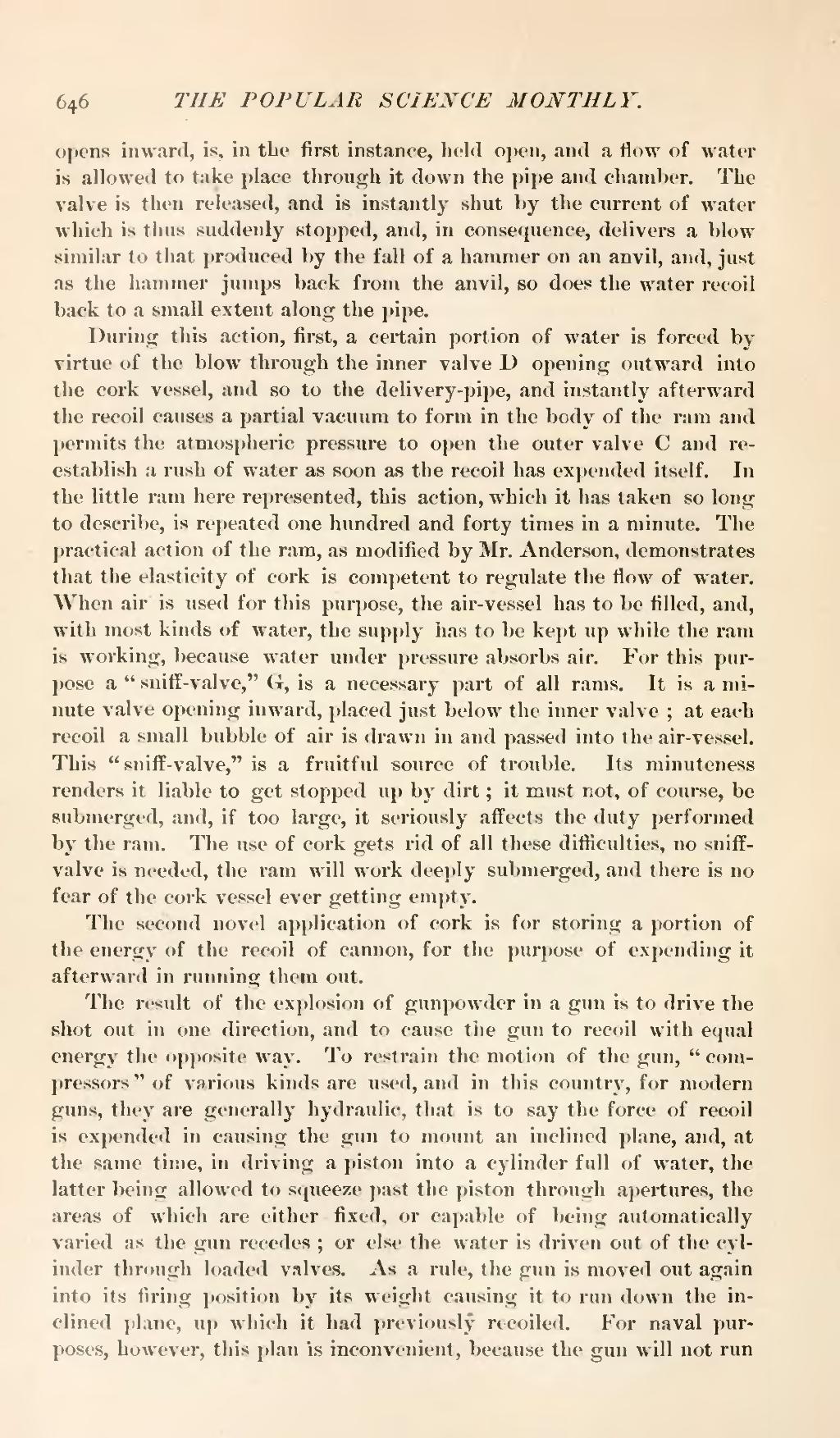opens inward, is, in the first instance, held open, and a flow of water is allowed to take place through it down the pipe and chamber. The valve is then released, and is instantly shut by the current of water which is thus suddenly stopped, and, in consequence, delivers a blow similar to that produced by the fall of a hammer on an anvil, and, just as the hammer jumps back from the anvil, so does the water recoil back to a small extent along the pipe.
During this action, first, a certain portion of water is forced by virtue of the blow through the inner valve D opening outward into the cork vessel, and so to the delivery-pipe, and instantly afterward the recoil causes a partial vacuum to form in the body of the ram and permits the atmospheric pressure to open the outer valve C and reestablish a rush of water as soon as the recoil has expended itself. In the little ram here represented, this action, which it has taken so long to describe, is repeated one hundred and forty times in a minute. The practical action of the ram, as modified by Mr. Anderson, demonstrates that the elasticity of cork is competent to regulate the flow of water. When air is used for this purpose, the air-vessel has to be filled, and, with most kinds of water, the supply has to be kept up while the ram is working, because water under pressure absorbs air. For this purpose a "sniff-valve," G, is a necessary part of all rams. It is a minute valve opening inward, placed just below the inner valve; at each recoil a small bubble of air is drawn in and passed into the air-vessel. This "sniff-valve," is a fruitful source of trouble. Its minuteness renders it liable to get stopped up by dirt; it must not, of course, be submerged, and, if too large, it seriously affects the duty performed by the ram. The use of cork gets rid of all these difficulties, no sniff-valve is needed, the ram will work deeply submerged, and there is no fear of the cork vessel ever getting empty.
The second novel application of cork is for storing a portion of the energy of the recoil of cannon, for the purpose of expending it afterward in running them out.
The result of the explosion of gunpowder in a gun is to drive the shot out in one direction, and to cause the gun to recoil with equal energy the opposite way. To restrain the motion of the gun, "compressors" of various kinds are used, and in this country, for modern guns, they are generally hydraulic, that is to say the force of recoil is expended in causing the gun to mount an inclined plane, and, at the same time, in driving a piston into a cylinder full of water, the latter being allowed to squeeze past the piston through apertures, the areas of which are either fixed, or capable of being automatically varied as the gun recedes; or else the water is driven out of the cylinder through loaded valves. As a rule, the gun is moved out again into its firing position by its weight causing it to run down the inclined plane, up which it had previously" recoiled. For naval purposes, however, this plan is inconvenient, because the gun will not run
